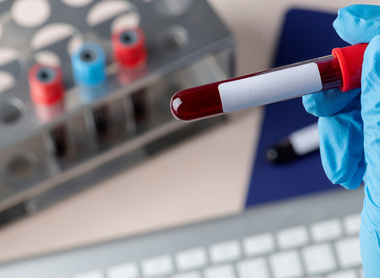Prepared by the SRAP subsection of the TTID Working Party
A customizable template for a biobank management framework
A biobank is a collection of biological samples, such as blood, and associated information that can be an important part of performing medical research. Biobanks may collaborate with academic or institutional researchers, public health agencies, and industry for their use.
Blood centers and similar institutions that collect blood from human donors can provide a unique population to study. As examples, some blood facility biobanks provide blood samples and data for surveillance monitoring during a pandemic outbreak, e.g. SARS-CoV-2; monitoring for certain diseases; or providing blood components and data for other types of research.
The decision to establish a biobank as a service requires careful consideration. It really depends on how well a biobank fits as a service within the blood facility’s infrastructure and culture. Once the decision has been made to establish a biobank, there are several publications available that address the development of a biobank, including the 2012 International Society for Biological and Environmental Repositories (ISBER) Best Practices for Repositories. This publication identifies best practices for the collection, storage, retrieval and distribution of biological materials for research.
Other general considerations for developing a biobank include:
- The type of service the biobank will provide. A biobank may provide samples and data, testing, special recruitment of specific types of samples or blood products depending on the researcher’s needs.
- Required resources will need to be identified to develop, maintain and administer the biobank service and database of information.
- A biobank governance committee should be created to provide oversite of the biobank. The oversite and management of the biobank may be different depending if it is created for public health use or academic or industry use.
- Define any public health partners - these may be local, national or even international public health agencies. In addition, there may be consent nuances regarding the use of the biobank for emergency surveillance in a pandemic situation.
- Donor participant considerations will require a broad informed consent where donors are willing to be health research participants. This may include subsequent information requests, consent requests, etc. Another consideration is how the relationship may change from a donor to a health research participant and what that process entails including communication, maintenance of trust, expectations, etc. Consider if participant feedback or community engagement will be included in the process.
- Define the data that will be collected. Examples include age, gender, ethnicity, address or postal codes for linkage to a socioeconomic strata; risk factor data collected during the blood collection interview; specialized data requested by public health possibly for an emerging pathogen or public health concern, (e.g., Zika and pregnancy, HEV or biochemical marker studies and diet, travel and Lyme, etc.).
- Considerations for specimen provision include the type of specimen in the biobank, e.g. whole blood, plasma, serum, etc. This includes how the material will be stored and where, energy requirements, the number of samples to be stored, and the stability of the samples in storage. There should be strict limits on the usage and access of specimens, including one-time aliquots provided to public health collaborators.
- Other items to consider are privacy, ethics and the legal use of donor blood; security and safety of personal data and specimens; regulatory requirements; and safeguards against secondary access. Define the degree of personal identifiers that will be included, will the identifiers be anonymized or pseudo anonymized. Determine if the data will be provided as aggregate or individual data, and if researchers will be allowed to contact individual participants to obtain additional information.
- Some other ethical considerations may include the use of biobank material for commercial purposes, such as method development and/or assay evaluation of emerging pathogens, underutilization of biobanks, or equitable access between low and middle-income countries vs high-income countries.
- A process will need to be developed for the researcher to request blood and data from the Biobank. The Biobank governance committee should work with the researcher making the request for blood specimens and data. Considerations are how a request is made, how it is approved, what are the ethical considerations, the use of blood and data and if the data provided is aggregate or individual, timelines for maintaining the data, etc.
- Each facility that decides to establish a biobank may have its own specific requirements and needs.
Below is a downloadable example of a framework for establishing and managing a biobank that can be modified to fit the needs of the individual Biobank. The example is based on the “Management and Governance Framework for the Plasma Donor Biobank – Héma-Québec” located at www.hema-quebec.qc.ca.
Acknowledgement
We thank Dr. Marc Germain and Héma-Québec for permission to use the “Management and Governance Framework for the Plasma Donor Biobank – Héma-Québec” as the basis for developing this template.
Selected References:
- Rigas et al. 2016 ISBT Science Series provides an excellent example on the requirements, including handling and storage facility, experienced staff committed to biobank operation, information platform, including a secure mechanism for sharing of data with public health and health research participants.
- Williams et al. 2009 Retrovirology. Researchers wishing to use biobank samples are provided with an information pack and must obtain a positive ethical opinion and project approval by the governance committee.
- Peeling et al. 2020. Lancet Infect Dis. Discusses use of biobank material to develop diagnostic methods and/or assay evaluation of emerging pathogens.
- Singh et al. 2022. J Med Ethics. Concerns regarding inequitable transfer among Low and Middle income countries and High income countries; and underutilization of biobank resources as a common problem and a source of ethical concern for biobankers.
- Management and Governance Framework for the Plasma Donor Biobank – 2021, Héma-Québec
Disclaimer: ISBT, TTID-WP and its SRAP subsection, and Héma-Québec do not take responsibility for the use and modification of this template.
Return to listing

Transfusion-Transmitted Infectious Diseases Working Party Surveillance, Risk Assessment & Policy Subgroup (SRAP), 2022
